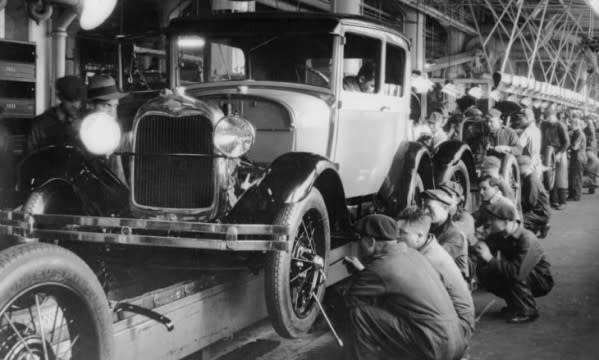
Can you spend your way to world class?
We must then run extra shifts, and other expensive band-aid fixes, to meet customer demands. The cost of all these impacts far outweighs the cost of doing it right the first time!
I was reflecting on a discussion I had a while back with a company that, like a few at the time, had seen rapid growth due to increased demand for their products. They reviewed their ability to meet this demand and concluded they need to expand their facilities.
That made sense – interest rates were low, banks keen to lend, so why not invest in new plant and equipment?
Indeed, why not? “Have you optimised your current plant and equipment?” was my response – even if capital is readily available, why spend it if you can meet your needs with what you already have?
In my experience many companies don’t know their true process potential or capacity. Obvious moves such as crewing all shifts and running through breaks have not been implemented, let alone proper debottlenecking and flow improvements.
These combined efforts can lead to significant increases in throughput (in many cases 2-3 times) and avoid the need for investment altogether.
There’s an assumption that by buying new equipment all the problems will go away and a warm rosy glow will shine on the business – this is rarely the case.
Not unless you have deeper pockets than your competitors can you outspend them to world class!
I think back to discussing equipment with the plant manager of a world class facility in Japan. He explained to me that they hate new equipment, that they know and understand their existing equipment, and with it they are already stable and performing.
Their competitive advantage wasn’t in buying new equipment, but instead innovating and operating with their existing equipment better than anyone else.
Contrast this with most companies where they assume the first day of new equipment will be the best, and every day after their investment diminishes through degradation: it has wear and tear so becomes less valuable.
They place no financial value on their understanding and ability to operate their equipment. In fact, we depreciate it! This likely explains the reluctance of many companies to invest in proper training and education ahead of installation.
These companies expect their untrained operators to get the best performance out of a newly installed machine that they’re learning on the job.
The associated extra costs are often omitted from the business case to make the purchase viable – “we have no option but to buy new capital, so we have to make the business case stack up”.
The first cost dropped is training.
This is like buying a Ferrari, giving the keys to a learner driver, and wishing them good luck.
The obvious impact is the new equipment doesn’t perform (because we’re learning as we go), we don’t meet projections, our inventories get low, and we end up creating more downtime.
We must then run extra shifts, and other expensive band-aid fixes, to meet customer demands. The cost of all these impacts far outweighs the cost of doing it right the first time!
So, what do world class companies do? Firstly, they extract every piece of potential out of the existing assets.
One company I worked with had increased their line efficiency from 65% to over 97% over three years, while improving quality and increased running speed from 500 per minute to 750.
This is almost a doubling of throughput with no capital spend.
Then if they can’t keep up with demand still, they invest in new capital in a scalable manner. Only buy what you need now and build the infrastructure to allow for future expansion (but don’t spend that money now).
When they must commit to new capital, they create multi-function project teams well in advance. This ensures operators, maintenance, quality assurance and others are trained and competent before commissioning.
These people are involved in commissioning and develop all the training materials, controls, schedules, 5S and other standards included in the installation. They set targets for start-up, which typically aim to achieve normal running by the end of day 1!
The results are outstanding – one plant I worked with outperformed an identical existing plant by the end of the second day! Unfortunately, I have experienced many of the more traditional approaches. Even worse, many of these companies then repeat the process!
Now more than ever, if you are considering investing, let’s talk.
By Ian Walsh, Managing Director - Intent Group NZ
If you'd like to meet and chat about how we can help you and your organisations on it's journey to World Class then get in touch with Ian on 027 534 9258 / email iwalsh@intentgroup.co.nz or local contact Antony Gibson on 021 161 9705
Images


